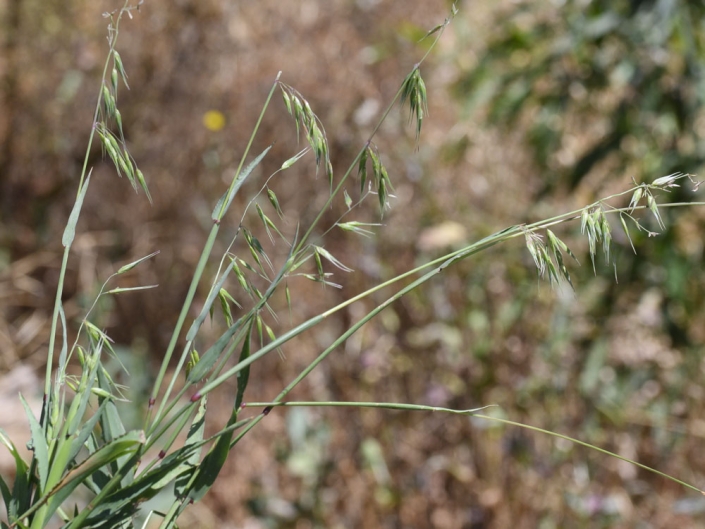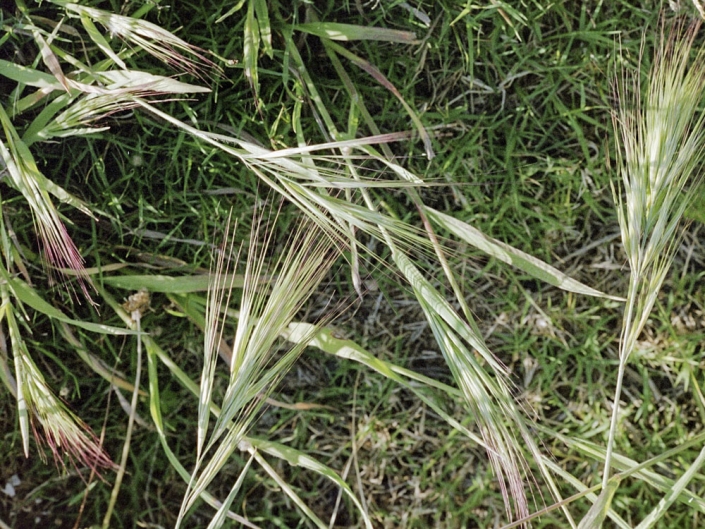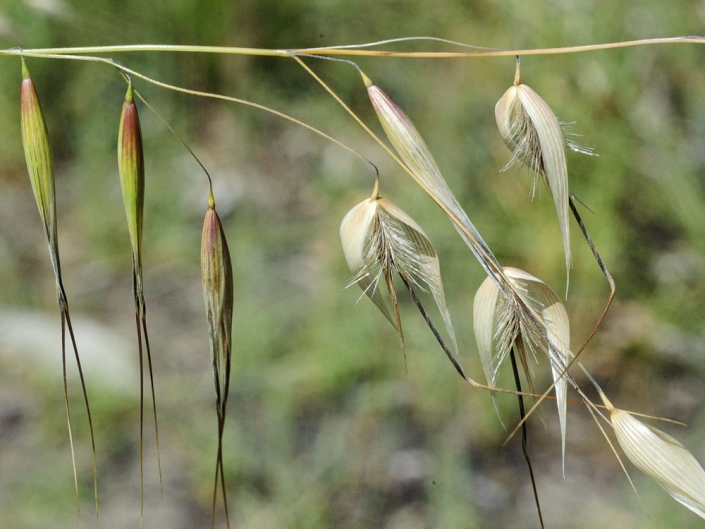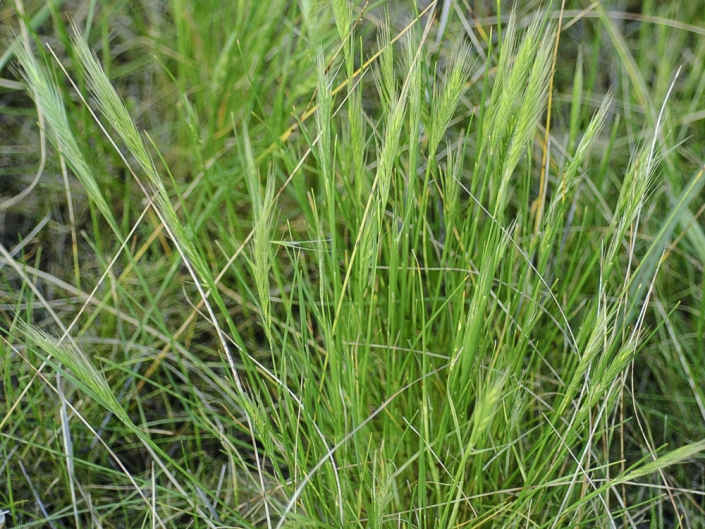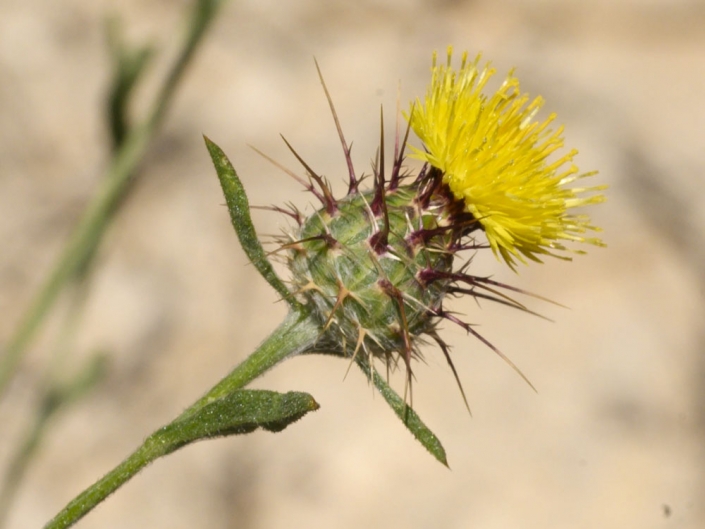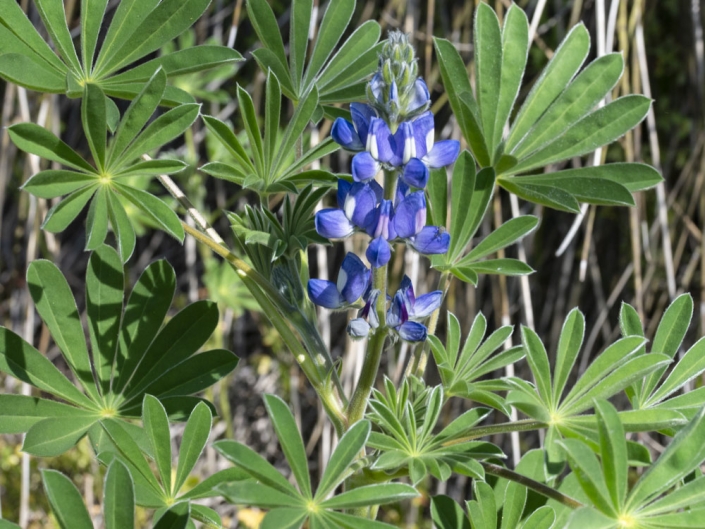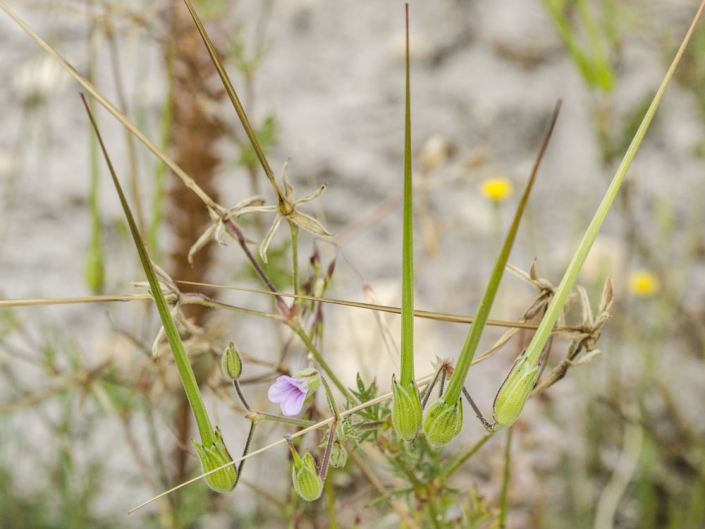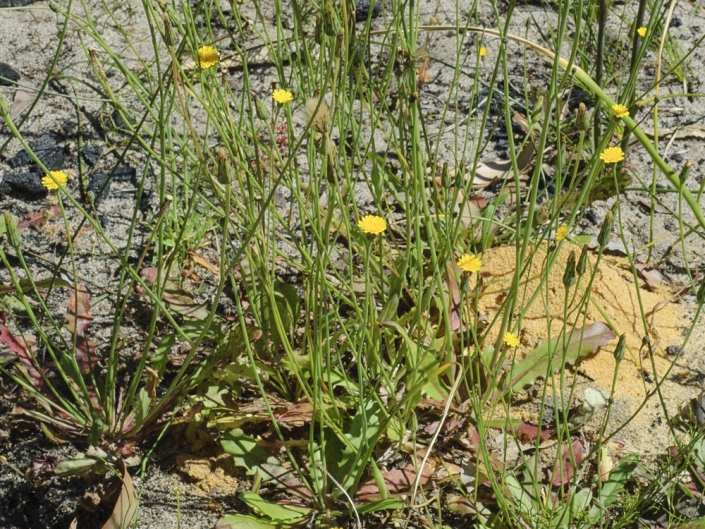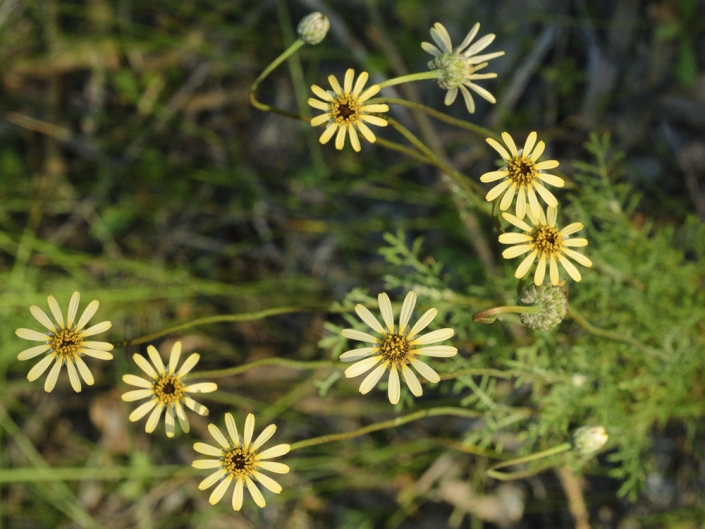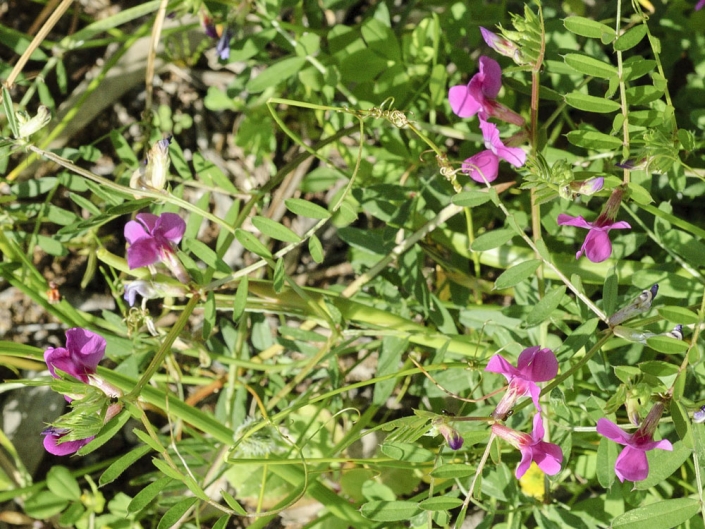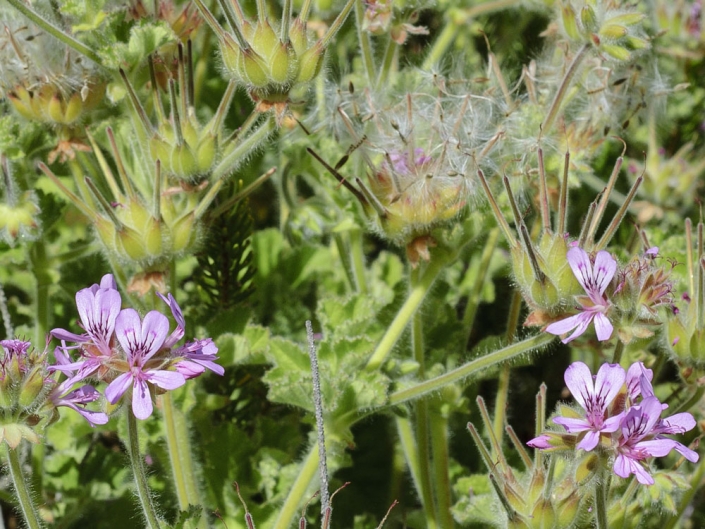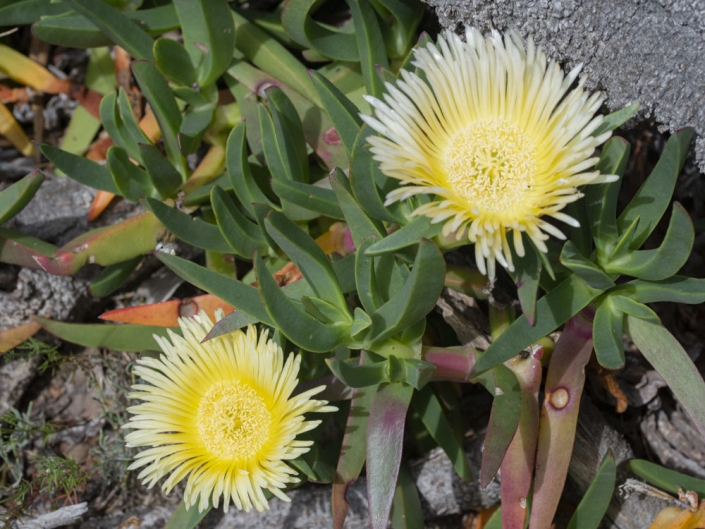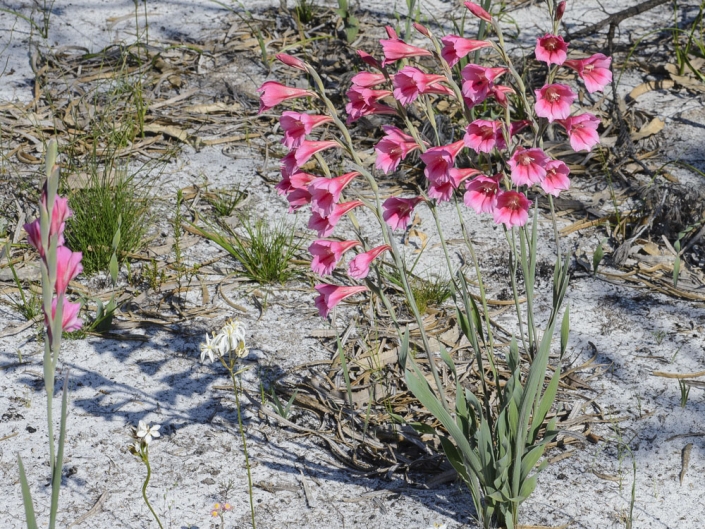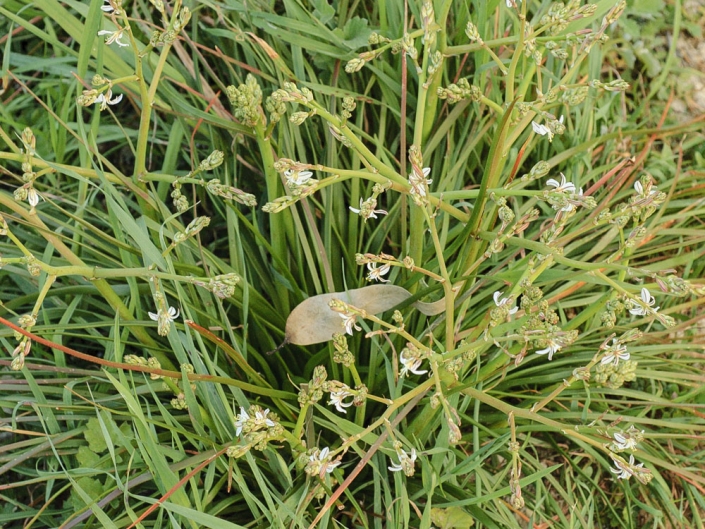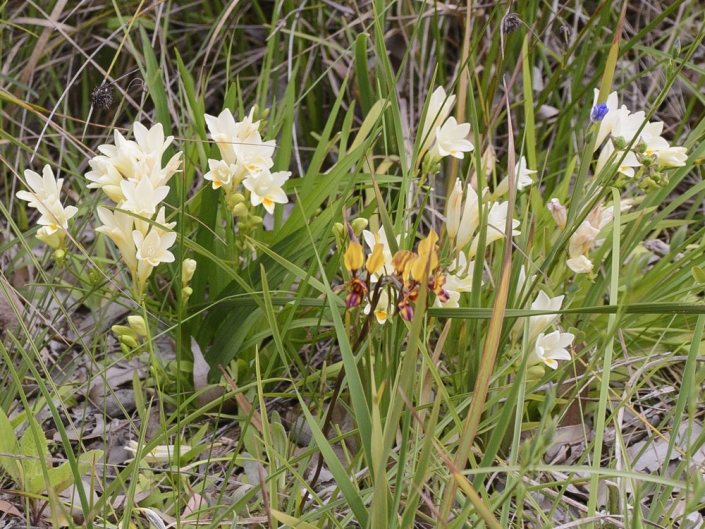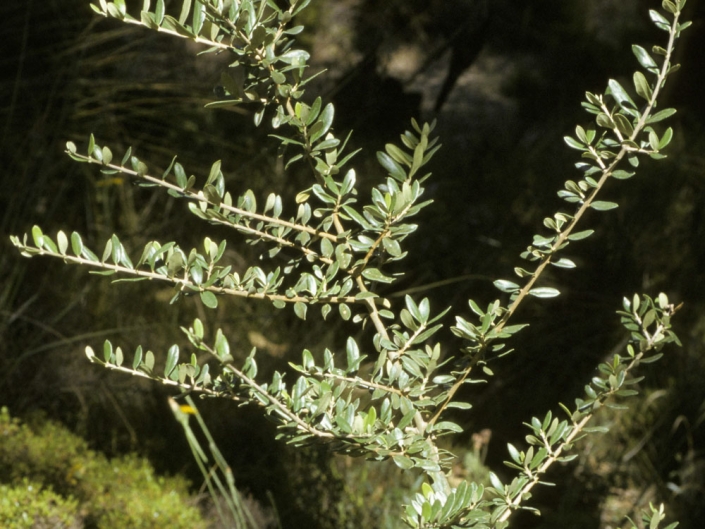Point of Interest 15: Weedy Disturbed Area
Areas south of the trail have a long disturbance history due to a fire break, fence and track maintenance, resulting in more weed problems. Jarrah Fuel reduction burns, and manual fuel reduction have also occurred here. Waldjumi (Jacksonia sericea) grows next to the marker. Vegetation and wildflowers are the same as nearby stops.
Common Wildflowers (see POI 14 and 16)
Focus Topic 31. Weeds
Weeds occur throughout Warwick Bushland but are most common in disturbed areas such as track sides, fence lines and fire breaks. They tend to replace native wildflowers in these areas, especially those that prefer open areas such as everlastings and some orchids. There are over 140 weed species, including 54 annual herbs, 14 perennial herbs, 9 shrubs, 26 grasses, 17 bulbous plants, 2 succulents and 19 trees (see full list). The weeds shown here include current targets for bushcare work by the Friends of Warwick Bushland.
Common track edge weeds include medics, clovers, vetch, annual grasses, veldt grasses and members of the aster family. Despite spraying these have become worse over time due to disturbance and excess fertiliser from dog droppings. Our local native plants are adapted to grow in extremely infertile soils, so extra fertiliser favours weeds! Annoying annual weeds common on track edges include Bur Medic (Medicago polymorpha) with seeds heads that stick to clothes and fur, Narrowleaf Clover (Trifolium angustifolium), which spreads into bushland, Maltese Cockspur (Centaurea melitensis), a small thistle with very sharp spines, Storksbills (Erodium species), which have long sharp corkscrew-like seeds, and Purple Vetch (Vicia Sativa), which smothers native plants.
Annual grasses also are a major problem near tracks, especially Wild Oats (Avena barbata), Annual Veldt Grass (Ehrharta longiflora) and Vulpia species, all of which produce numerous sharply pointed seeds. Perennial Veldt Grass (Ehrharta calycina) is more widespread in local bushland. These are all targets for bushcare work on track edges along with many other annuals weeds. More widespread annual weeds that tend to be ignored due to relatively minor impacts include Flat Weed (Hypochaeris species), Ursinia (Ursinia anthemoides) and Tall Fleabane (Conyza albida).
Bulbous weeds are a major problem in natural areas in Perth. Some of these arrived in Warwick Bushland due to rubbish dumping while others are long established. Freesias are becoming widespread in several areas in Warwick Bushland and are a high priority for future action. Pink Gladiolus (Gladiolus caryophyllaceus) is scattered throughout the bushland and spreads by forming numerous wind-dispersed winged seeds. Hundreds of these are pulled up by volunteers each year but many still remain.
Several weedy shrubs are targets for bushcare because they grow rapidly and cover large areas in healthy bushland. These include Pigface (Carpobrotus edulis) and Pink Geranium (Pelargonium capitatum). Weedy perennials that are often found near tracks include Geraldton Carnation Weed (Euphorbia terracina), especially near the school fence, and Onion Weed (Trachyandra divaricata). These seem to be associated with limestone used to make tracks and have not spread far into the bushland yet. Skeleton Weed (Chondrilla juncea), a Declared Pest Plant, was successfully eradicated from this area in the past.
Invasive trees are the most destructive weeds and have spread within the bushland from gardens nearby. Flinders Range Wattle (Acacia iteaphylla) the most frequent seen and seven other acacias sometimes need to be removed. Other trees that spread into bushland include European Olive, which is an increasing problem, Cape Lilac and palm trees. These are spread by birds that eat their fruit.







